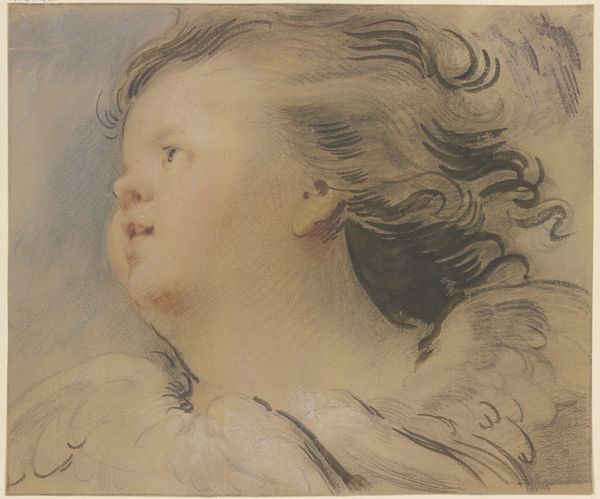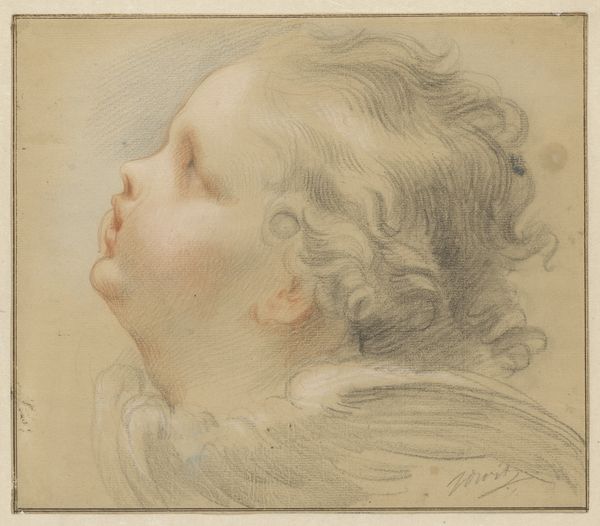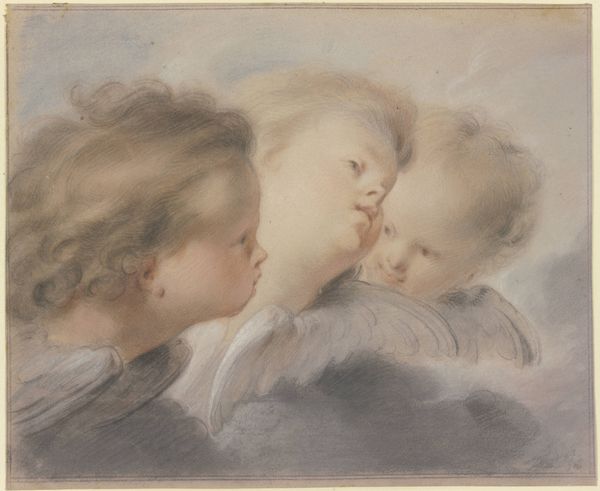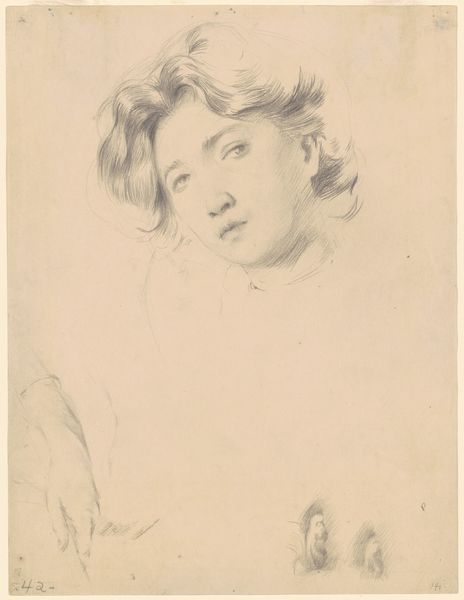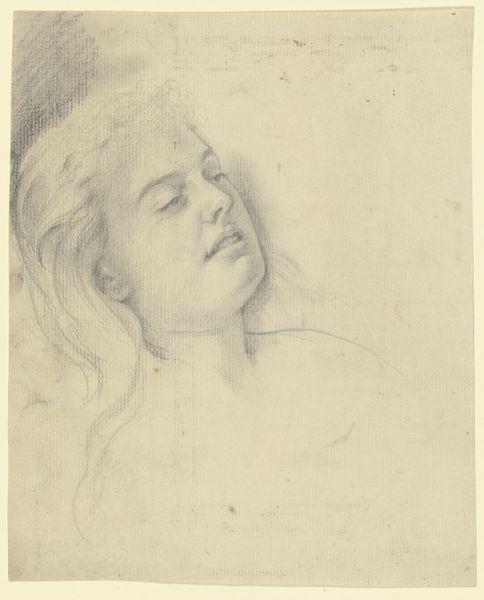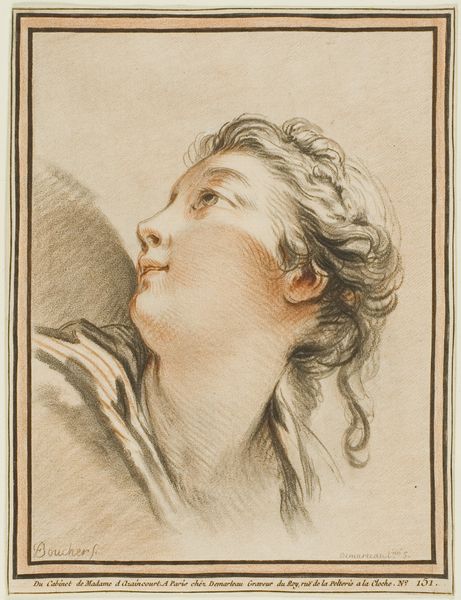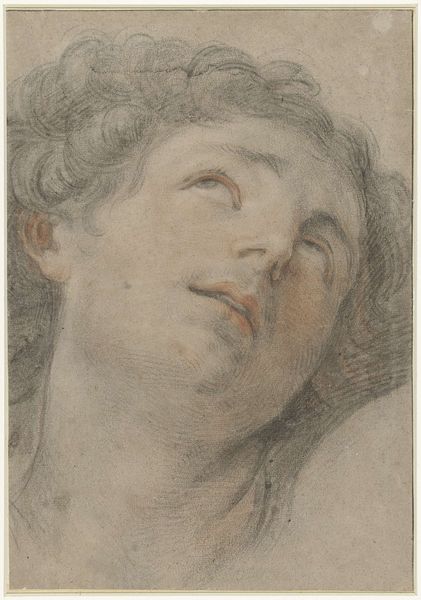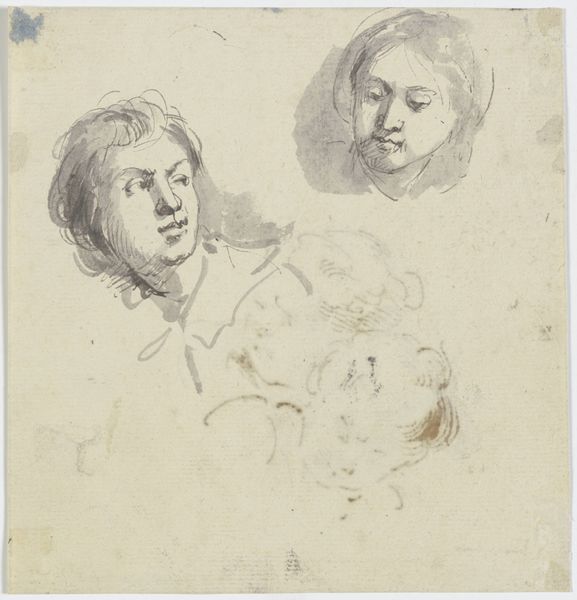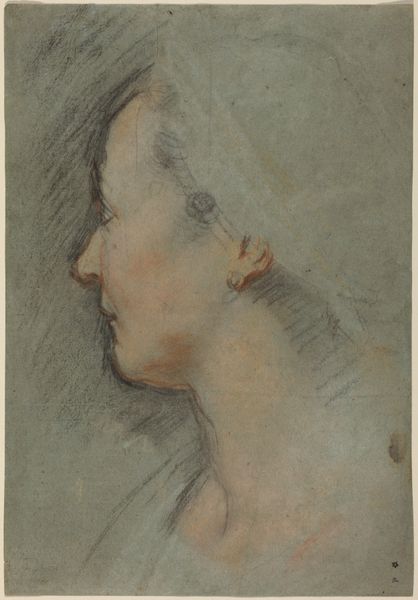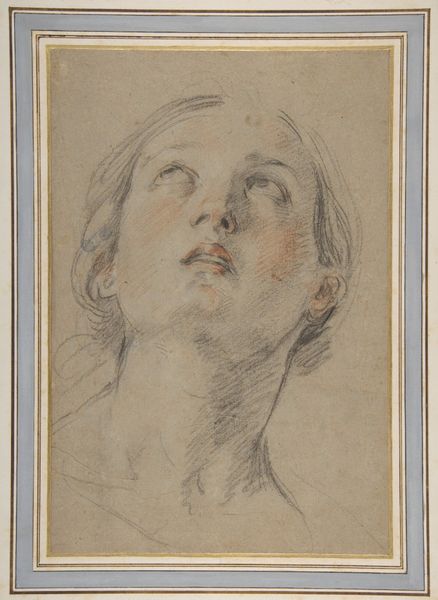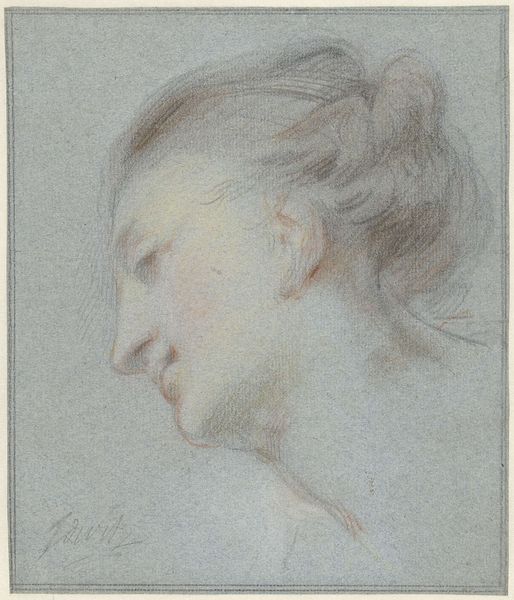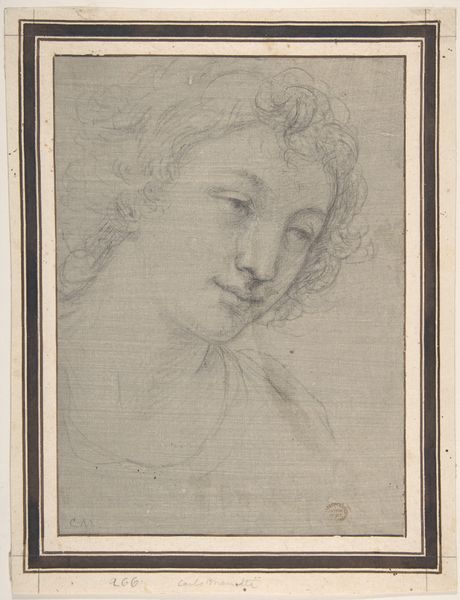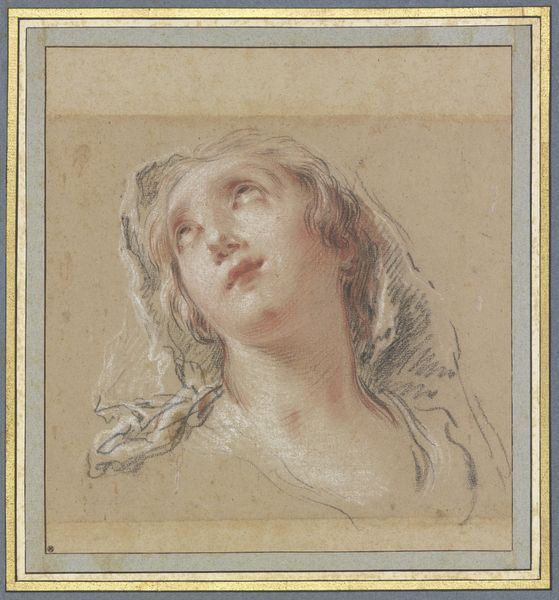
drawing, watercolor, pastel
#
portrait
#
drawing
#
fairy-painting
#
baroque
#
charcoal drawing
#
oil painting
#
watercolor
#
portrait drawing
#
watercolour illustration
#
pastel
#
history-painting
#
miniature
Copyright: Public Domain
Editor: Here we have "Two Angel Heads," a drawing by Jacob de Wit currently housed in the Städel Museum. The figures have such a delicate, almost wistful air about them. What's your take on this piece? Curator: It’s a fascinating piece. Beyond the delicate rendering, consider the context. De Wit was working during a period where the Baroque style was in full swing. But it also hints at the transition to more sentimental depictions of religious subjects. Who are these angels really meant to represent and for what purposes? Are they vehicles to carry colonial and religious ideas to subjugated populations? What kind of emotional narrative were the artists intending to elicit, and how might that reinforce certain power dynamics? Editor: That's interesting, I hadn't thought about it that way. The softness of the image made me think more about the emotion. Are you suggesting that’s deceptive, in a way? Curator: Not deceptive, but certainly strategic. Baroque art frequently uses heightened emotional appeals. But let’s also consider that the art historical record, and even the act of museum display, often centers a Western view, overlooking the ways such imagery might have been experienced or resisted by different communities across the globe. Are these angels symbols of hope and beauty, or instruments of cultural dominance? Whose narratives are amplified by the display of such images? Editor: That’s a really interesting question to consider; I'll never see the drawing the same way again. Thank you for providing that extra perspective. Curator: And thank you for your initial reflections. It’s in bringing together diverse perspectives that we begin to unravel some of these complex historical threads.
Comments
No comments
Be the first to comment and join the conversation on the ultimate creative platform.
